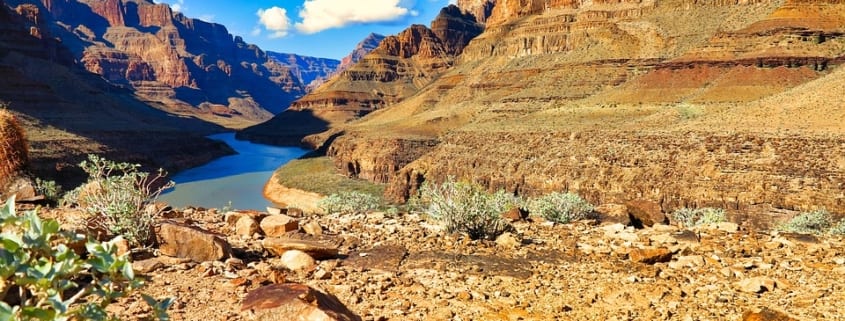Damaged Pipeline at Grand Canyon’s North Rim has been Successfully Repaired
The beginning of the summer season was not as smooth as officials (and tourists)
visiting the North Rim of the Grand Canyon had hoped it would be.
Even by May 2019, the wintery weather wasn’t quite ready to release its icy grip on the
Grand Canyon. This resulted in a rockslide which broke the North Rim’s water pipeline.
This final breakage was the sixth one this year. Yet, the sixth time was the last time.
Officials realized quickly after the issue was discovered that it was time for much more
than a quick fix.
The pipeline that needed major repair transports water from Roaring Springs, which is
a natural spring about 3,500 feet below the rim, to water tanks on the North Rim. These
tanks are, unfortunately, the only public water supply for the North Rim.
Immediately following the break, National Park Service Officials made the call. Thanks
to the Grand Canyon’s notorious issues with water, even when the pipes were in
perfect working order, that no water would be pumped to the tanks until the pipeline is
repaired. This was a call for conservation, so that there was still a reserve of water,
should an emergency arise.
This meant that lodging and day use facilities on the North Rim of Grand Canyon
National Park would be forced to operate under restricted water use while crews
worked on the broken pipeline.
Additionally, the shortage of water meant that conveniences were put to the wayside,
again in the name of conservation. Immediately, portable toilets replaced public
bathrooms. Public laundry and shower facilities were closed and at overnight lodging
and day-use facilities, paper plates and plastic utensils were used. This helps use as
little water as possible until the problem is rectified. While this is not convenient, most
residents, businesses, and frequent visitors to the Grand Canyon know it is necessary.
Thankfully, it did not take more than a few weeks to get the damaged pipeline up and
running again. Even though the pipeline was fixed however, it took a little longer to lift
water restrictions fully and return to their normal state of basic water conservation
measures.
Areas where drinking water remained sparse for a few more weeks after the breakage.
Although, if you are planning a trip to the Grand Canyon, it is advised to bring water
and fill up when you can. After all, depending where you go, there is never a guarantee
there is going to be drinking water readily available.
Fortunately, for those who were desperately in need or didn’t want to risk it, the Grand
Canyon’s South Rim wasn’t affected by the breakage. Thus, the South Rim was able to
continuously provide drinking water at various filling stations.

 https://pixabay.com/en/usa-the-grand-canyon-landscape-3409701/
https://pixabay.com/en/usa-the-grand-canyon-landscape-3409701/

